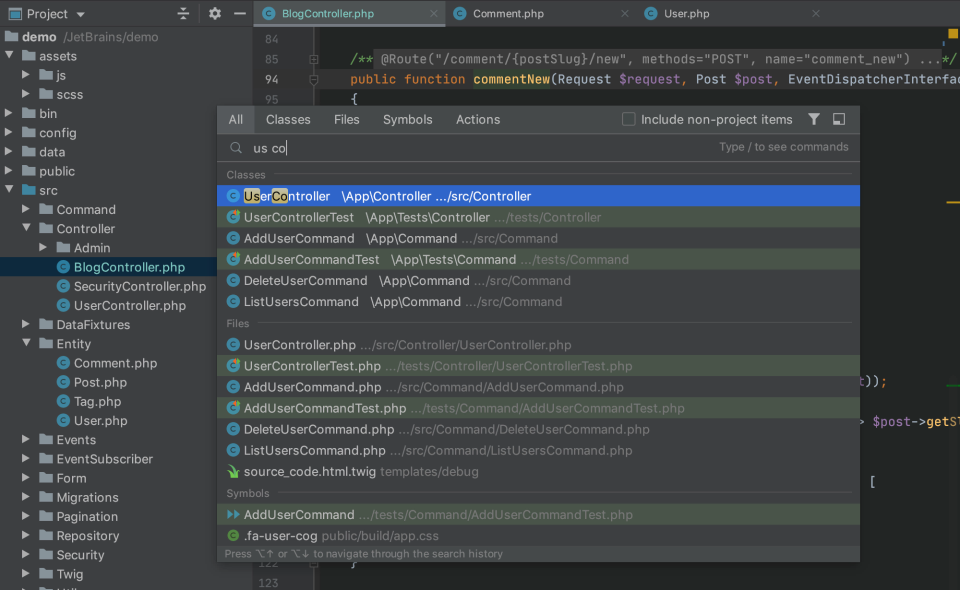As a Java and TypeScript developer, I’m so accustomed to having precise information for library symbols in the editor while coding that I never visit any online documentation. Yet, when developing a Vue application, I often had to switch back and forth between my editor and the online library documentation. I wasted a lot of time tracking down information, which was simply frustrating.
What if we could provide developers with all of the needed information about Vue libraries in the editor as well? That’s the question we asked ourselves in the WebStorm team some time ago. Back then, our Vue support was based on analyzing JavaScript files shipped with Vue libraries. This approach was delivering incomplete results and it wasn’t possible to extract detailed documentation. We investigated existing solutions, and it turned out that each Vue library had its own mechanism for compiling metadata information, and in some cases one was lacking completely.

- Vue Please sign in or create an account to participate in this conversation. The most concise screencasts for the working developer, updated daily. There's no shortage of content at Laracasts. In fact, you could watch nonstop for days upon days, and still not see everything!
- How can I format a Vue component from.eslintrc.js file? Or better, How can I configure my project settings (Editor - Code Style) to set code formatting according to a.eslintrc.js file? When I format the Vue component with CMD + ALT + L command, Tab are 4 instead of 2, but I've got configure 2 in code style preferences.
- I've build a page in our application in Sublime text using Vue.js. Now that I've shared it with a college it turns out his PHPstorm doesn't play nice.
Setting up PHPStorm to work with Laravel. Laravel is a wonderful framework that has a wide range of features and many implementations that make life easier for a programmer. However, the downside to this convenience is the difficulty in reading the code.
Since we develop in TypeScript and provide IDE support for it as well, we know how useful type definition files (*.d.ts.) can be. They provide precise information about JavaScript library symbols, which allows IDEs and text editors to deliver relevant code completion, validation, and quick documentation. We wanted something similar for web frameworks, and that’s how we came up with web-types.
What is web-types?
Web-types is an open source standard for documenting various web frameworks. In its first iteration, it’s focused only on Vue support. The documentation consists of a single JSON file. The good news is that it’s already supported by some major Vue libraries – you can get detailed documentation for bootstrap-vue, quasar, vuetify, nuxt.js, and @ionic/vue while coding in WebStorm.
Phpstorm Vue Code Style
Private Vue libraries of many companies are also shipped with web-types. Good in-place documentation – code completion, validation, and quick documentation – significantly improves the onboarding process for developers and allows them to quickly learn about new components and their features.
Last but not least, web-types can be used for documenting your own project. This can come in handy when, for example, you register your components in a very specific way that can prevent an IDE from recognizing them. It can also help whenever you want to document your directives or provide detailed information about component events and slots.
How to build web-types?
Building a web-types JSON is relatively easy. A JSON Schema is available here, so you have autocompletion and documentation directly in your editor if the file is named web-types.json. Usually, though, you’ll want to generate the file from your Vue library source code. You can develop your own build script to extract information. If you use JSDoc-style documentation for components, you can use the vue-docgen-web-types package to generate the file.
What’s next?
We’re dedicated to promoting the web-types standard, so you can expect many more libraries and frameworks, like Web Components, to support detailed documentation in the future. However, we won’t be able to achieve much without support from the community. We’re counting on you to contribute web-types to your favorite Vue libraries. Links to similar PRs can be found here.
The WebStorm team
After a long time, I wanted to show you another quick tip. At the moment I work a lot with InertiaJS, built by Jonathan Reinink. It allows you to create fully client-side rendered, single-page apps. It makes a lot of fun, but there was one thing that has always been annoying me. At least if you're using Laravel Mix.
Phpstorm Vue Js Debug
If you take a look at the demo project PingCRM, there is a file called webpack.mix.js. You will find something like this:
Phpstorm Vue Template
This allows you to import components directly from the resources/js directory like so:
What sucks now is, that you can not use PhpStorm autocompletion when you hover over the path, press cmd and click to jump to that file as you always do. This is because PhpStorm doesn't know how to resolve that.
The solution
But there is a solution of course. And it's quite easy.
Create a separate webpack file and extract that webpack configuration to that file. You end up something like this:
The only thing you have to do now is to tell Laravel Mix to use that webpack configuration instead of the inline-configuration. You should end up with this in your webpack.mix.js:
The last step is to tell PhpStorm there is a webpack configuration that can be used. Because PhpStorm only accepts webpack configuration in this case, the above steps have been necessary.
Go to the settings and define your new created webpack.config.js file there and you're done. It takes a little bit of time until PhpStorm recognizes it.
If everything worked paths like '@/Shared/Logo' should now be resolved by PhpStorms autocompletion and let you jump directly into that file.
